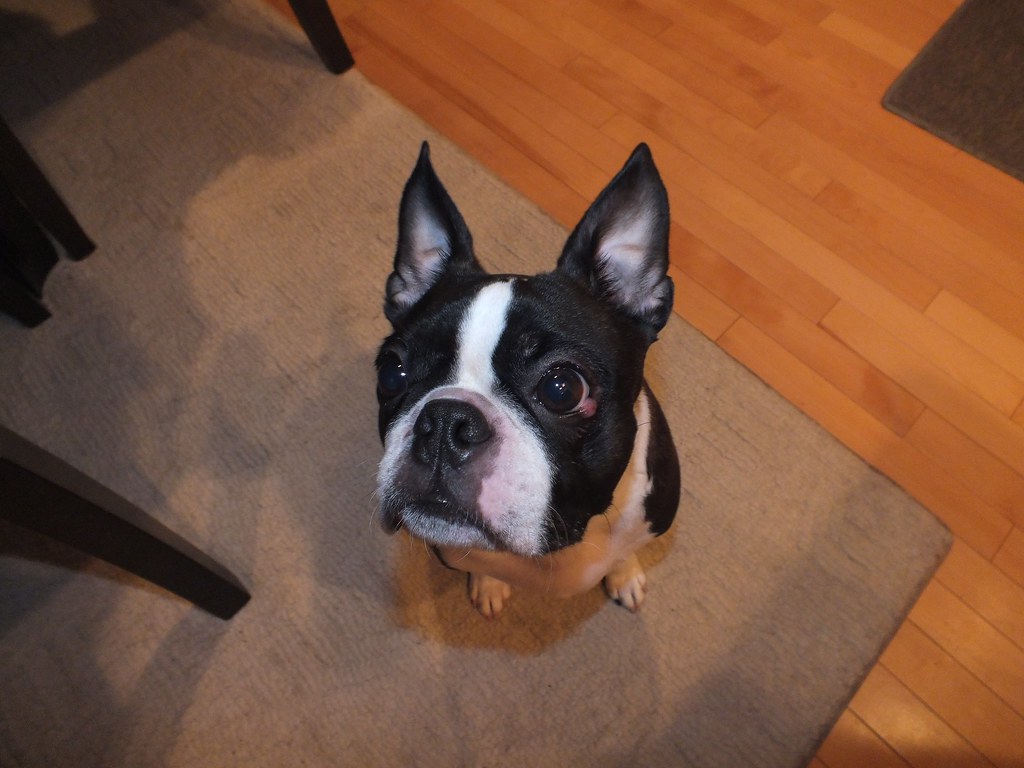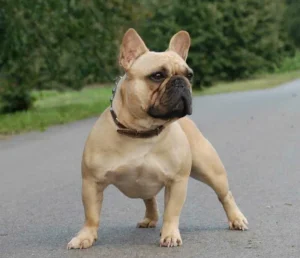Cherry Eye Surgery Cost
The cost of cherry eye surgery can vary significantly. In general, you can expect to pay anywhere from $300 to $1000 per eye, depending on various factors. This might seem like a wide range, but it’s because the final cost is influenced by several variables.
Factors Influencing the Price of the Procedure
The cost of cherry eye surgery can depend on:
The severity of the prolapse and whether one or both eyes are affected.
The experience and expertise of the veterinarian performing the surgery.
Geographical location, as vet costs vary widely from one region to another.
The type of facility where the surgery is performed—a specialty clinic may charge more than a general vet office.
Additional treatments that may be necessary, such as medications or follow-up visits.
Insurance Options for Cherry Eye Surgery
Pet insurance providers that cover cherry eye in French Bulldogs:

| Provider | Pros | Cons | Price (French Bulldog) |
|---|---|---|---|
| Lemonade | – Fast claims processing – Affordable premiums – Customizable plans | – No wellness plan add-on | $30-$60 per month |
| ManyPets | – Covers hereditary conditions – Wellness plan add-on available – No lifetime or annual limits | – Higher premiums – Limited discounts | $40-$80 per month |
| Embrace | – Diminishing deductible – Flexible annual limits – Wellness plan add-on | – Longer waiting periods – Limited discounts | $35-$70 per month |
Notes:
- Pricing can vary significantly based on your dog’s age, location, deductible, and coverage selections. The ranges provided are rough estimates for a French Bulldog puppy or young adult dog.
My Favorite Pet Insurance is Lemonade.
Because they offer the most value for money with affordable prices for the most extensive coverage.
When to Seek Veterinary Help
Why the rush? Because the longer the gland is exposed, the greater the risk of it becoming irritated or infected. It can also lead to dry eye, a condition that can cause chronic discomfort and vision problems. Therefore, getting to the vet quickly is key.
Potential complications of cherry eye in French Bulldogs that may require surgical intervention:
- Chronic irritation and inflammation of the eye
- Corneal ulceration or abrasion due to the prolapsed gland rubbing against the cornea
- Excessive tear production (epiphora) or dry eye (keratoconjunctivitis sicca)
- Recurrence of the prolapsed gland after initial treatment attempts
- Infection of the prolapsed gland or surrounding tissues
- Scarring or granulation tissue formation around the prolapsed gland
- Impaired vision if the prolapsed gland obstructs the visual field
- Development of entropion (inward rolling of the eyelid) due to the prolapsed gland
- Corneal pigmentation or vascularization from chronic irritation
- Potential loss of vision if left untreated and complications progress severely
Pre-Surgery Assessment and Preparation

Frenchies 101 — BLVD Vet Chicago
Before any talk of surgery, your vet will perform a thorough examination to confirm the diagnosis of cherry eye. They’ll check to make sure there aren’t any underlying conditions contributing to the problem. Once confirmed, they’ll walk you through the surgery process, what to expect, and how to prepare your Frenchie for the procedure.
Overview of the Surgical Procedure for Cherry Eye Removal
The surgical procedure to correct cherry eye is relatively straightforward. It involves repositioning the prolapsed gland back to its normal spot and securing it there. There are a couple of surgical methods to address cherry eye, but the most common and widely accepted is the ‘pocket technique’. This method involves creating a small pocket or fold in the conjunctiva—the tissue covering the white part of the eye—into which the gland is tucked and then sutured into place.
It’s crucial that the gland is not removed entirely, as it plays a vital role in tear production. Removing the gland can lead to dry eye syndrome, which requires lifelong management. The surgery is usually done under general anesthesia and takes about 30 minutes to an hour. Most dogs can go home the same day of the surgery, with a follow-up visit to ensure proper healing.
Comparing Estimates from Different Clinics
It’s wise to get estimates from a few different clinics before deciding where to have your French Bulldog’s surgery. But, don’t just look at the bottom line. Consider the reputation of the clinic, the experience of the staff, and the level of post-operative care they offer. A lower cost might mean a compromise in one of these areas, which could end up costing you more in the long run if complications arise.
5 things to keep in mind when picking a clinic for cherry eye surgery in French Bulldogs:
| Factor | Description |
|---|---|
| Experience with Brachycephalic Breeds | Look for a clinic that has extensive experience treating brachycephalic breeds like French Bulldogs, as they have unique facial structures and are prone to certain conditions like cherry eye. |
| Board-Certified Veterinary Ophthalmologists | Consider clinics that have board-certified veterinary ophthalmologists on staff, as they have specialized training and expertise in treating complex eye conditions, which can help ensure the best possible outcome. |
| Success and Complication Rates | Inquire about the clinic’s success rates for cherry eye surgery in French Bulldogs specifically, as well as their complication rates, such as recurrence of the prolapsed gland or other post-operative issues. |
| Surgical Approach and Techniques | Discuss the clinic’s surgical techniques and approaches for repositioning the prolapsed gland, and why they prefer certain methods over others for optimal results. |
| Cost and Payment Options | Consider the total cost quoted by the clinic, including pre-operative testing, surgery, medications, and follow-up visits. Also ask about payment plans or pet insurance options they may accept. |
Post-Operative Care for Optimal Recovery

After surgery, your French Bulldog will need some TLC to ensure a smooth recovery. You’ll be given specific instructions from your vet, but here are some general guidelines:
Keep your dog calm and restrict their activity for a few days post-surgery.
Prevent your dog from scratching or rubbing their eye, which might mean using an Elizabethan collar.
Administer any prescribed medications, such as antibiotics or eye drops, as directed.
Attend follow-up appointments to monitor the healing process.
Watch for any signs of complications, such as excessive swelling, discharge, or a reappearance of the prolapse.
Recognizing and Managing Potential Complications
While most dogs recover from cherry eye surgery without any issues, it’s important to be aware of potential complications. These can include infection, reactions to sutures, or recurrence of the prolapse. If you notice anything out of the ordinary, contact your vet immediately. The sooner a complication is addressed, the better the chances of a full recovery.
FAQs
Q: What should I do if I notice signs of cherry eye in my French Bulldog?
A: If you notice a red bulge in the corner of your dog’s eye, it’s important to consult with your veterinarian as soon as possible. They can provide a proper diagnosis and discuss the best treatment options for your pet.
How long does recovery from cherry eye surgery take?
Recovery from cherry eye surgery typically takes about two to three weeks. During this time, it’s important to follow your veterinarian’s instructions closely, which will include keeping your dog’s activity level low and preventing them from scratching or rubbing their eye. Your vet may also schedule follow-up visits to ensure the eye is healing properly and that there are no signs of infection or other complications.
Is cherry eye surgery safe for my French Bulldog?
Cherry eye surgery is generally considered safe for French Bulldogs and is commonly performed with a high success rate. The key is to choose a reputable veterinarian with experience in performing this specific surgery. Discuss any concerns you have with your vet beforehand, and make sure you understand the risks and benefits associated with the procedure.
Can cherry eye return even after surgical removal?
While the goal of cherry eye surgery is to permanently correct the condition, there is a chance that it can recur. The recurrence rate is generally low, especially when the surgery is performed correctly. Ensuring that your dog receives the proper post-operative care and monitoring their recovery closely can help reduce the risk of the cherry eye returning.
How can I find a reliable vet for cherry eye surgery?
Finding a reliable vet for cherry eye surgery involves doing a bit of research. Start by asking for recommendations from fellow French Bulldog owners or breed clubs. You can also consult with your primary veterinarian, who may refer you to a specialist in veterinary ophthalmology. When evaluating potential vets, consider their experience with cherry eye surgeries, their success rates, and the feedback from other pet owners.
Don’t be afraid to ask questions during your initial consultation. A trustworthy vet will be happy to discuss their qualifications, the procedure, and what to expect during your dog’s recovery.
Look for vets with experience in treating cherry eye in French Bulldogs.
Check online reviews and ask for referrals from other pet owners.
Consider the vet’s communication style and willingness to answer your questions.
Does insurance cover pre-existing cherry eye conditions?
When it comes to insurance coverage for pre-existing conditions like cherry eye, the answer is usually no. Most pet insurance policies do not cover conditions that were present before the policy was purchased. However, if you obtain insurance for your French Bulldog before any signs of cherry eye develop, the surgery and associated treatment should be covered according to the terms of your policy.
It’s important to read the fine print of any insurance policy before purchasing it. Look for information on waiting periods, coverage for hereditary conditions, and exclusions. If you’re unsure, speak directly with the insurance provider to clarify what is and isn’t covered.





Leave a Reply